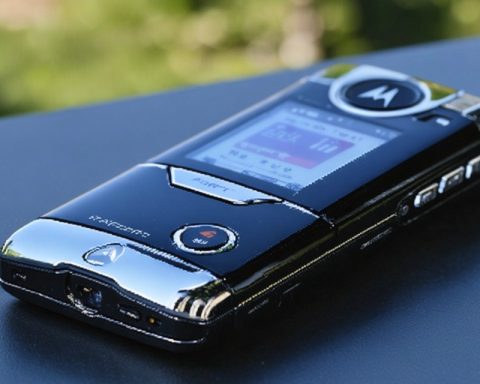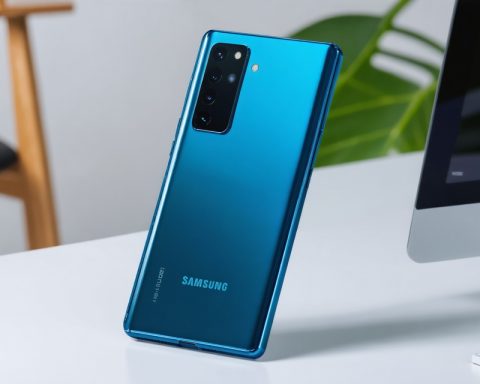- Smartphones are deeply integrated into daily life, often distracting users every few minutes.
- A study from the London School of Economics indicates that simply distancing smartphones doesn’t notably enhance productivity.
- Devices like laptops often replace phones as distraction sources when phones are out of reach.
- Dr. Maxie Heitmayer highlights that apps, not phones alone, are pivotal in drawing user attention.
- Adjusting notification settings could be key to reducing distractions.
- Smartphone use requires balanced management to capitalize on their benefits while minimizing distractions.
- Protecting younger users and encouraging enrichment over distraction is crucial.
- The challenge lies in harnessing the utility of smartphones for creativity and learning while managing their compelling allure.
For many, smartphones have seamlessly woven themselves into the fabric of everyday life. They’re our constant companions, buzzing with notifications and demanding attention every few minutes, like a playful, digital pup. The average person interacts with these devices every four to six minutes, drawn in by habit and the allure of blinking updates. However, simply placing your smartphone out of arm’s reach may not be the antidote to this digital magnetism.
A captivating study from the London School of Economics, published in Frontiers in Computer Science, sought to unravel whether the physical distance of smartphones from their users could impact their distraction levels during work. Imagine a room soundproofed from the world’s clamor, where participants were tasked to work over two days with their everyday devices—a laptop and a phone. The subtle twist? The phone’s location varied; in one scenario, it lay on the table beside them, in the other, a mere 1.5 meters away.
The findings were intriguing. While smartphone use indeed decreased with the device at a distance, the participants’ attention didn’t necessarily refocus on their work. Instead, laptops became the new avenue for distraction. Work and leisure time saw little deviation, proving that the mere act of distancing oneself from a phone doesn’t guarantee increased productivity.
Phones, it seems, have mastered their allure as distraction devices, effortlessly eclipsing computers in their charm. Dr. Maxie Heitmayer, a leading researcher, notes that it’s not the smartphone itself that’s the core of the issue, but rather the apps, meticulously designed to captivate. These apps create a digital dance that’s hard to resist, drawing users in without a conscious goal in mind, but providing a familiar and entertaining refuge.
The advice? Tailor notifications to fit more thoughtful patterns, or perhaps silence them altogether—a small step in reclaiming focus. Yet, the reality of modern life suggests we won’t be putting our phones down anytime soon. Social media, a beast of its own, further complicates this relationship, feeding on our impulses.
Dr. Heitmayer eloquently describes the titanic struggle many face: the allure of smartphones crafted by powerful corporations determined to profit from our divided attention. As distractions grow, especially for younger users, there’s an urgent need to protect the vulnerable, advocating for smartphone use that enriches rather than diminishes daily life.
Amidst the haze of pixels and notifications, a clearer truth emerges: smartphones, with their unparalleled utility, are here to stay. But it’s within our power to shape their influence, to harness their potential for learning and creativity while guarding against the lure of constant connectivity. In this balance lies the true challenge and the promise of the digital age.
Are Smartphones the Dopamine Machines of the Digital Age? Discover the Truth!
Unpacking Smartphone Distraction: Can Distance Really Reduce Our Reliance?
Smartphones have become integral to our lives, often acting like digital companions that require and capture our attention through a non-stop stream of notifications. According to research from the London School of Economics, simply moving your smartphone out of reach doesn’t necessarily enhance productivity. Even when the phone is placed 1.5 meters away—out of immediate reach—users just find new sources of distraction, like laptops. This study published in Frontiers in Computer Science sheds light on the psychological grip our devices have over us, despite their physical distance.
Understanding the Smartphone’s Allure
Despite their utility, smartphones are engineered to command attention through carefully crafted apps, which Dr. Maxie Heitmayer identifies as the core issue. These apps are designed to engage users, sometimes without a specific purpose, offering fulfillment that is often fleeting but hard to resist. The bright interface and evolving features make smartphones a formidable distraction that can divert focus from important tasks.
Expert Tips to Mitigate Digital Distraction
To combat this, individuals are advised to:
1. Customize Notifications: Tweak notification settings to minimize interruptions. Opt for only essential alerts or silence notifications during work hours to help maintain focus.
2. Use Focus Modes: Take advantage of built-in smartphone features like “Do Not Disturb” or “Focus Mode” to block distracting apps during work hours.
3. App Management: Regularly review and organize apps on your smartphone to reduce clutter and remove those that no longer serve you or are particularly distracting.
4. Digital Wellbeing Tools: Use apps that track screen time or offer insights into your usage habits. Google’s Digital Wellbeing and Apple’s Screen Time can help monitor and manage usage effectively.
Real-World Use Cases and Industry Insights
Today’s market trends indicate an increasing awareness of digital wellbeing. According to a report from Market Research Future, the digital wellbeing market is projected to grow significantly as more people seek balance in their tech usage. Companies are responding by developing apps and features that encourage healthier phone usage habits.
Predicting the Future of Smartphones
Insights suggest smartphones will continue to integrate more AI capabilities, offering personalized experiences tailored to user habits. As technology evolves, manufacturers will likely focus on creating tools that help manage attention and combat mental fatigue.
Pros and Cons of Smartphone Usage
Pros:
– Unparalleled access to information
– Connectivity with others globally
– Productivity tools and apps for work
Cons:
– Potential for distraction and reduced productivity
– Negative impact on mental health due to overuse
– Risk of reduced attention span
Actionable Recommendations for Immediate Change
– Start Small: Begin by setting specific “phone-free” periods during your day. Commit to keeping your phone out of sight during meals or meetings to cultivate mindfulness.
– Create Tech-Free Zones: Designate physical spaces in your home as tech-free zones to encourage unplugged interactions and mindfulness.
– Weekly Detox: Implement weekly digital detox days where you refrain from using non-essential apps to reset your mental state.
Conclusion: Navigating the Digital Era
Smartphones are entrenched in everyday life, but it’s up to users to manage their influence. With thoughtful intervention through apps and mindful habits, you can harness smartphones for beneficial purposes while counteracting their pull. Embrace tools and methods that help manage your digital experience and ultimately enable you to focus more on the tasks that truly matter.
For further insights into digital wellbeing, consider visiting the London School of Economics.













